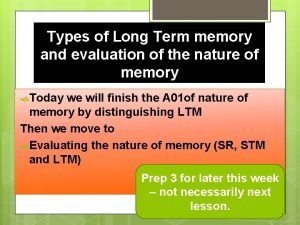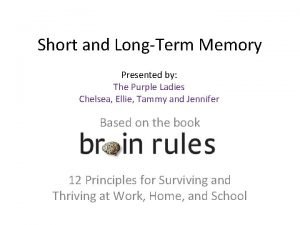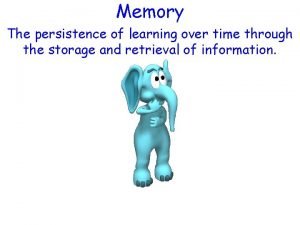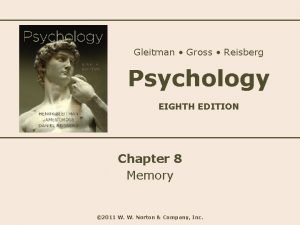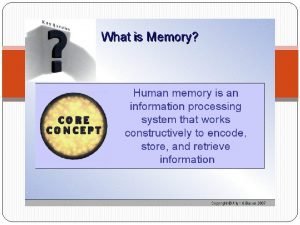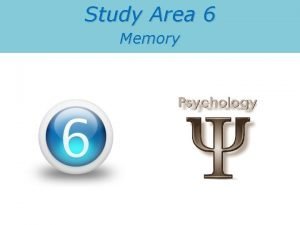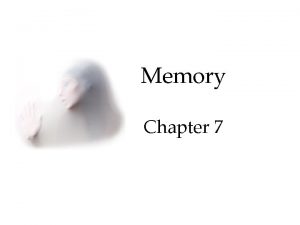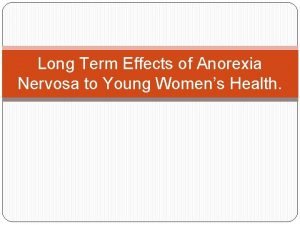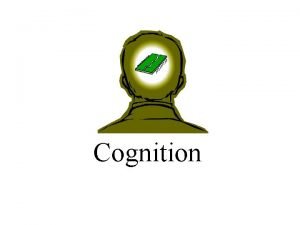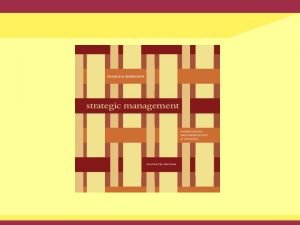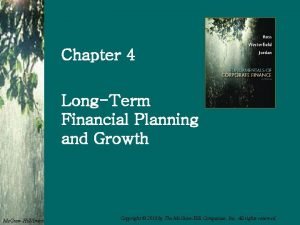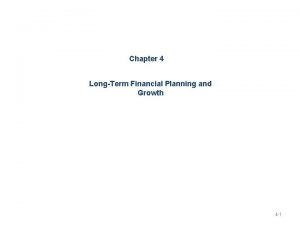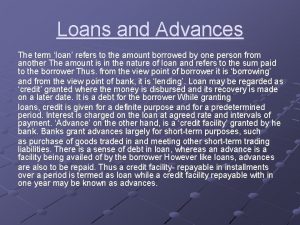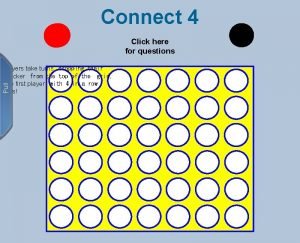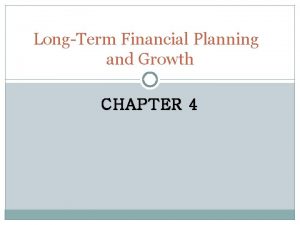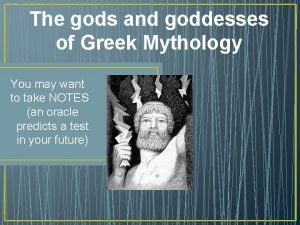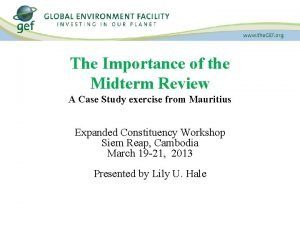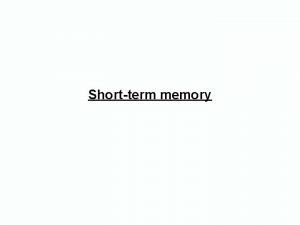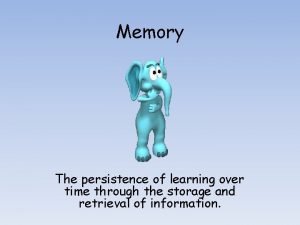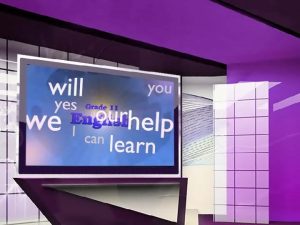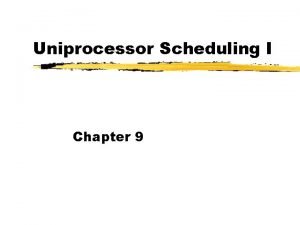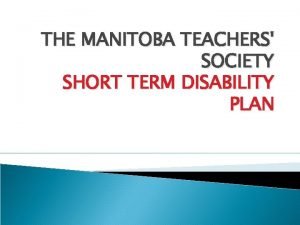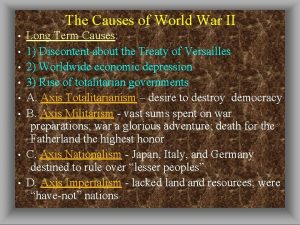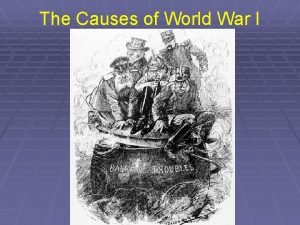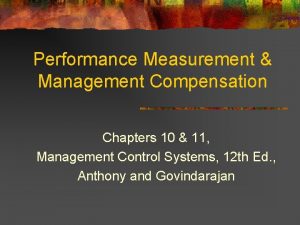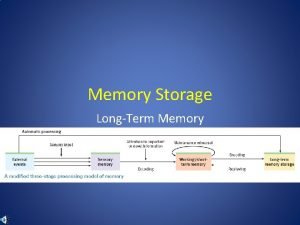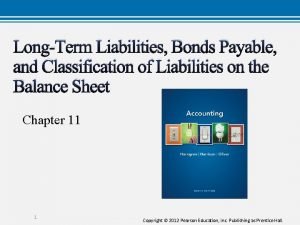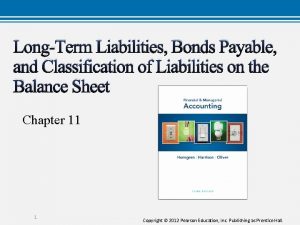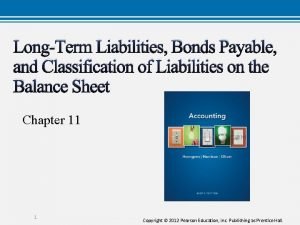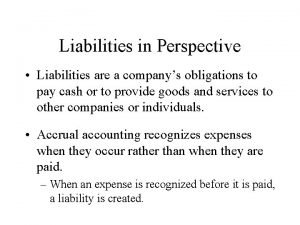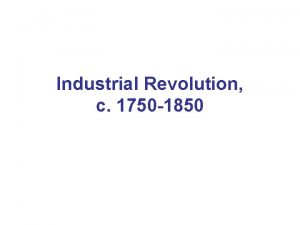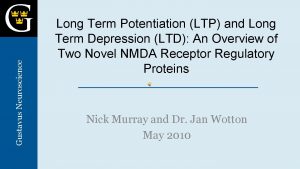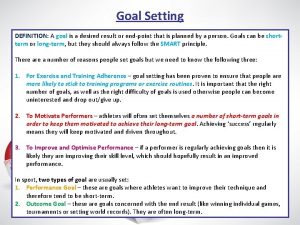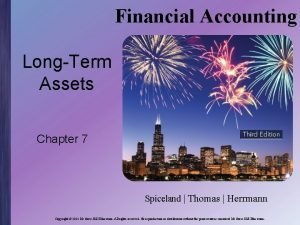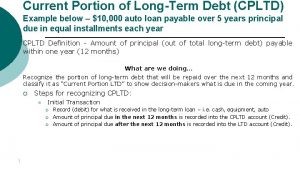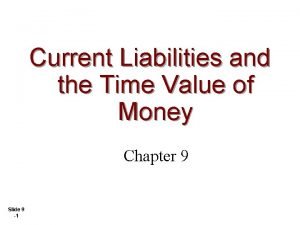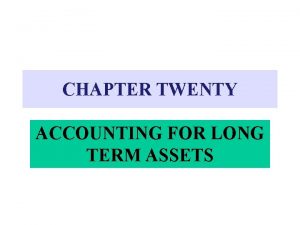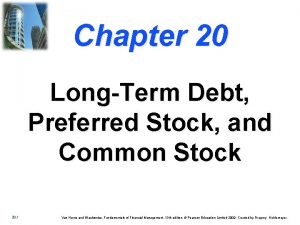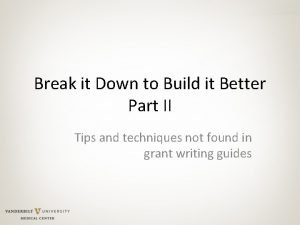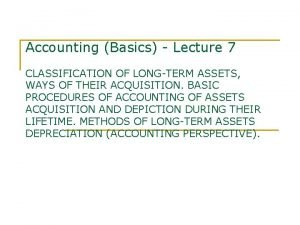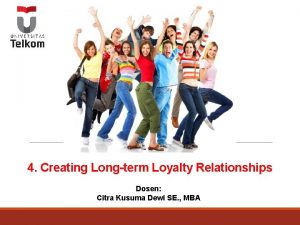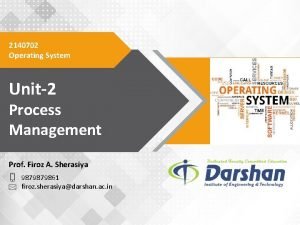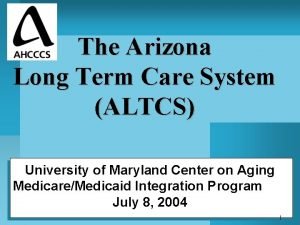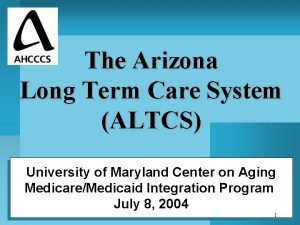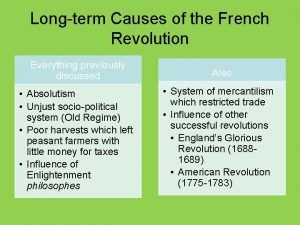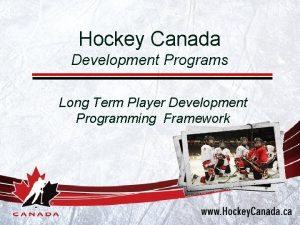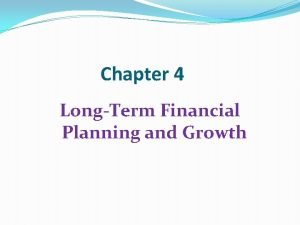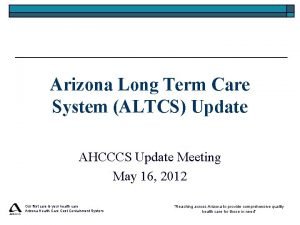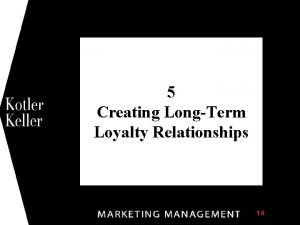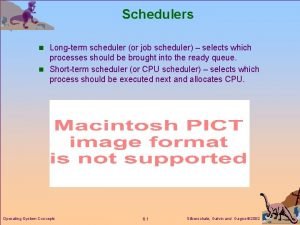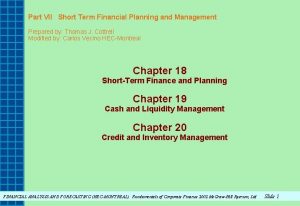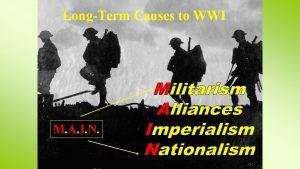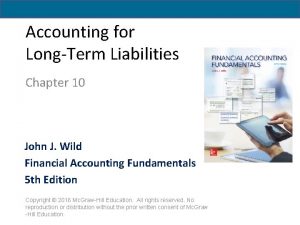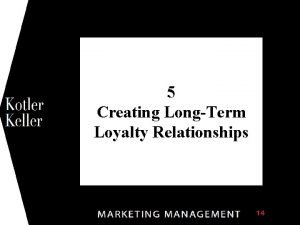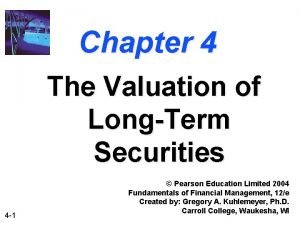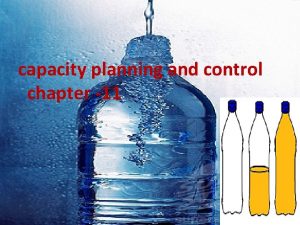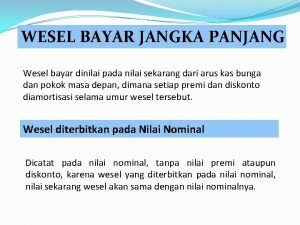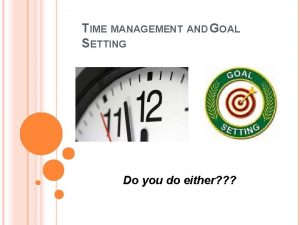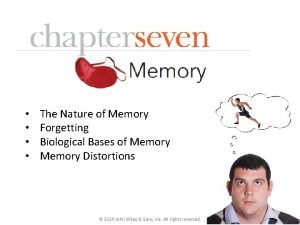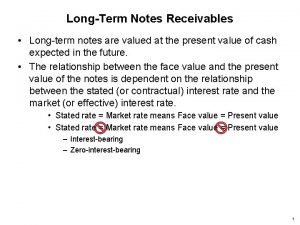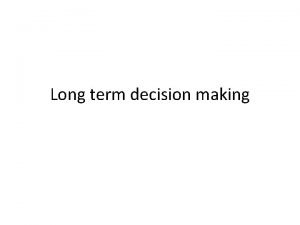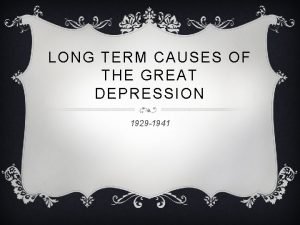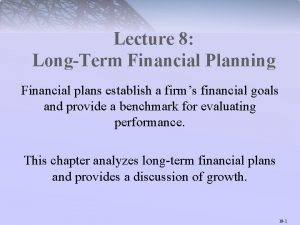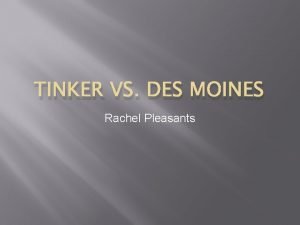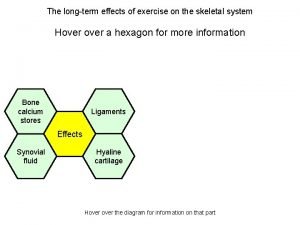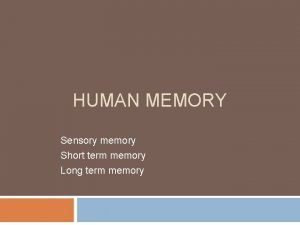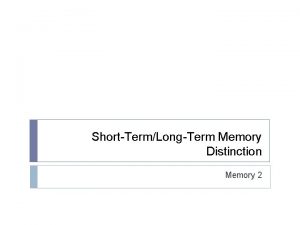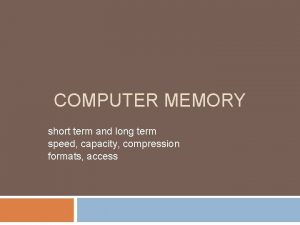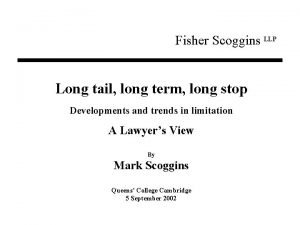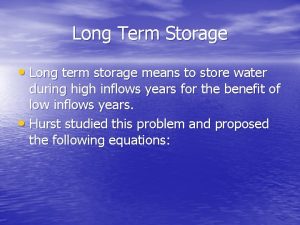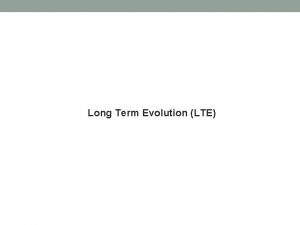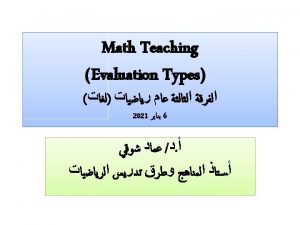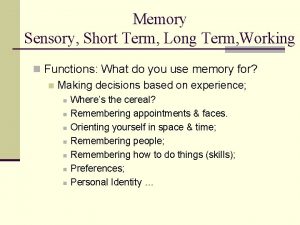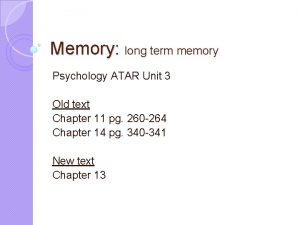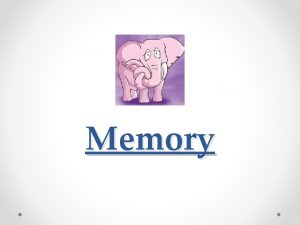Types of Long Term memory and evaluation of






























































































































- Slides: 126

Types of Long Term memory and evaluation of the nature of memory Today we will finish the A 01 of nature of memory by distinguishing LTM Then we move to Evaluating the nature of memory (SR, STM and LTM) Prep 3 for later this week – not necessarily next lesson.

But first lets see how you got on with the exam style Q’s. Give yourself a few minutes to read your answers. Compare to colleagues. Add/edit anything you think would be better – can you steal a good idea.

High Challenge – application Q Bryan has been driving for five years. Whilst driving, Bryan can hold conversations or listen to music with little difficulty. Bob has had four driving lessons. Driving requires so much of Bob’s concentration that, during lessons, he often misses what his driving instructor is telling him. With reference to features of the working memory model, explain the different experiences of Bryan and Bob. (Total 4 marks)

Core challenge – Q 1 Central executive – oversees the activity of the subsystems, an attentional system, retrieves information from LTM. Articulatory loop / articulatory control process /– is a verbal rehearsal system / inner voice. phonological store – is a sound-based system / inner ear. (these may be subsumed under Phonological loop – the sound system) Visuospatial sketch pad – where visual and spatial information is imaged and manipulated / inner eye. Episodic buffer – where information from each subsystem can inter-connect. Allow broader features of the model including parallel processing, limited capacity, active processing in STM.

Core challenge Q 2

Core challenge - Q 3. Likely examples for a verbal task include learning / repeating words, speaking and reading. Visual tasks include forming an image of something and answering questions about it or mentally counting the windows of a house, watching DVD, reading.

High Challenge Q 1 The working memory model replaced the idea of a unitary STM. It suggests a system involving active processing and short-term storage of information. Key features include the central executive, the phonological loop (consisting of two components, the phonological store and the articulatory control process), and the visuo-spatial sketch pad

High Challenge Q 2 Bryan – Driving skills have become part of his procedural memory - it is held in the long term memory. Therefore capacity if the central executive is freed, enabling the CE to pay attention to music or conversation directing it to the right slave system. Bob’s central executive is having to work very hard. His driving ability has not become ‘automatic’ and thus his CE, due to its limited capacity is struggling with deciding what to pay attention to and where it should be processed. The CE therefore focusses attention to the most important/demanding task which is driving and doesn’t remember what his driving instructor has said.

High Challenge Q 3 The visuo-spatial scratchpad (sketchpad) stores / manipulates visual and spatial information and will be active when the person is doing a visual task. The phonological loop, comprising the phonological store (inner ear) and articulatory control system (inner voice) will be active during a verbal task.

Types of LTM History: in 1972 Tulving suggested that a concept of a unitary LTM was too simple, and LTM was actually made up of three distinct parts. Episodic memory, Semantic memory and Procedural memory. In 1989, Tulving injected 6 people with a (safe) radioactive substance that would allow blood flow to be tracked in the brain. He found that when they thought about personal childhood experiences, the back of the brain was active, and when they thought about historical facts, the front of the brain was active. Although this was only in 3 of the 6 participants

Do you know the difference between Types of LTM Identify the correct type of Long term memory for each of the examples on your sheet. Perhaps colour code it – or put a E, S or P after each statement.

Types of LTM Episodic memory • • • An autobiographical record of things that have happened Contains information about what, where and when an event happened (3 ws) Allows us to make predictions about what will happen to us in the future Constructed rather than reproductive and are prone to errors and illusions Examples include a memory about a holiday or a relationship split Semantic memory Procedural memory • Structured record of facts, meanings, concepts and knowledge • General factual knowledge, shared with others • Contains an enormous and evergrowing amount of knowledge • Examples include the names of cities or historical dates • Memories tend to be unconscious • Memory of skills and how to do things • Acquired through repetition and practice • Contain deeply embedded automatic sensory-motor behaviours • Examples include how to ride a bike or play guitar

Evaluating the nature of memory. A 01 up to 6 mark Q’s. . Outline research into… Describe the findings of research into…. Outline a study into the capacity of the STM A 03 can be asked in all Q’s Give one strength of research into the capacity of the STM. (4 marks) Outline and evaluate research into/ theories of… (16 marks)) Discuss research into/ theories of/ explanations of…(16 marks ) For lo nger Q’s remem b 1/3 = er A 2/3’s = 01 A 03 So… 8 = 3 A 01 + +5 A 03 16 = 6 A 01 + 10 A 03

To truly embed the research into your LTM. We are going to use elaborate rehearsal. We are going to recreate each study (sort of). After each one you are going to BRIEFLY summarise the procedure and conclusions. After each procedure, you will need to add details to your nature of studies grid that you filled in for homework. Add any details that you left out, or that need clarifying If you don’t have the grid, then you will need to draw it out before we begin. If you think your grids are detailed enough – try writing a PEEl paragraph instead. There is research to support/challenge the claim that the STM has a limited capacity. Xxxxxx et al found that when …. . You are my guinea pigs

Research evidence to use Sensory store, STM and LTM – Capacity Sensory Store Duration Coding N/A Short Term memory Long Term Memory Copy quickly. Make the 9 boxes as big as you can.

The capacity of the sensory store An image will be flashed up very quickly on the screen (for 50 miliseconds or 1/20 th of a second) When it disappears write down as many of the letters as you can remember

Grid 1 A C F E X L C G S R N K

Did you get it right A C F E X L C G S R N K

The capacity of the sensory store This time When it disappears I will call out either ‘ 1’ ‘ 2’ or ‘ 3’. Your task is to write down the letters that were in the numbered row I called out For example. .

GRID 2 B T J K L S R V F X I M

Did you get it right B T J K L S R V F X I M

Grid 3

Did you get it right?

Discuss with your partner: What happened when recalling whole grid or 1 line. What does this suggest about the SR? – capacity and/or duration?

Sperling – Sensory Register capacity Use yo packs ur to help Write a summary of Sperling’s research in the grid 1. Procedure: How was capacity researched? IV DV 2. Results: What happened? 3. Conclusion: So what? What does this suggest about the Sensory registers capacity? What does this suggest about the duration of the SR?

Sperling – Sensory Register capacity Use yo packs ur to help Procedure: IV – recall whole grid or recall 1 line DV – percentage of letters recalled Conclusions Participants did not know which line they would be asked to recall so when recalling 1 line they must have had the whole grid stored momentarily. Thus capacity is larger than 4/5 items…. The success of reporting (saying) the letters for 1 row is very quick so the letters do not decay. However even though there is capacity to hold the full grid, recall is poor due to the time it takes to report them all – they must have decayed in this time. Thus duration is short appx 0. 5 second.

Capacity in STM Jacobs (1886) Digit Span- You will participate in this Watch the powerpoint Write down the numbers immediately the presentation of each list after

Digits will appear here They will only appear for half a second so focus

8

1

3

0

End of list

2

5

3

6

8

End of list

3

7

9

2

5

6

End of list

0

7

1

8

4

5

3

End of list

1

2

7

5

3

6

3

4

End of list

1

0

8

3

2

3

7

5

4

End of list

4

6

9

7

3

4

6

1

2

7

End of list

Did you get them right and in the right order. The minute they are in the wrong order this is your capacity. 8 1 3 0 2 5 3 6 8 3 7 9 2 5 6 0 7 1 8 4 5 3 1 2 7 5 3 6 3 4 1 0 8 3 2 3 7 5 4 4 6 9 7 3 4 6 1 2 7

STM capacity Jacobs (1887) research on the capacity of STM 1. Procedure: How was capacity researched? 2. Results: What could P’s recall? 3. Conclusion: So what? What does this suggest about the Short Term memory capacity?

STM capacity Jacobs (1887) research on the capacity of STM Participants were presented with a sequence of digits or letters and required to repeat them back in the same order. The pace was controlled at half second intervals using a metronome. The procedure was repeated a number of times and the longest list of sequences that was correct 50% of the time was the participants digital span. On average participant's digit span’s were between 5 -9. This is usually phrased as 7 + or – 2, so the capacity of STM is known as 7+ or – 2 items. Jacobs also found that capacity increased steadily with age; in one sample of school girls he found that 8 yrs remembered an average of 6. 6 digits whereas for 19 yrs it was 8. 6 digits.

Duration of STM Peterson and Peterson (1959) Watch the Powerpoint You will be presented with 3 letters You will count backwards in threes from three numbers then recall (write down) the letters

Practice

SMP

395

Now write down the trigram

Ready?

XTR

289


FBW

495


LCP

987


GZV

531


HSL

246


XFT

267

End of test

Results How many did you get right? 1. XTR 2. FBW 3. LCP 4. GZU 5. HSL 6. XFT What did you notice about the length of time counting backwards?

Their Discuss 2 observations you can make from this graph? findings suggest that our STM fades in under a half a minute if we are not rehearsing it: Extension: Why is a line graph appropriate? After 18 secs, fewer than 10% recalled correctly. After only 3 secs, 80% recalled correctly. Recall got progressively worse as the delay grew longer!

Peterson and Peterson Duration of the STM Procedure: How was duration researched? IV DV 2. Results: What could P’s recall? 3. Conclusion: So what? What does this suggest about the Short Term memory capacity?

Coding Baddeley (1966) Four lists - I will read you a list Write down as many as you remember in the right order Condition 1 Write down as soon as I finish saying them Condition 2 Write them down after 30 seconds of counting backwards from 99

List A Man Cap Can Cab Mad Mat Cat Map

List B Pit Few Cow Pen Sup Bar Day Run

List C Large Big Huge Broad Tall Fat Wide High

List D Good Huge Hot Safe Thin Deep Strong Foul

Encoding results: memory List A Acoustically similar List B Acoustically dissimilar List C Semantically similar List D Semantically dissimilar Why has this happened? What do you think this tells us about STM and LTM?


Findings: ○ most errors in immediate recall condition (STM) was the acoustically similar list ○ most errors in the delayed recall condition (LTM) was the semantically similar list. Conclusions ○ For STM since LIST A was recalled the least efficiently, it seems there’s acoustic confusion in the STM, suggesting STM is coded on an acoustic basis ○ For LTM since List C was recalled the least efficiently, is seems there’s semantic confusion in LTM, suggesting LTM is coded on a semantic basis.

Baddeley encoding – STM and LTM Procedure: How was encoding researched? IV DV 2. Results: How were errors different for the STM condition and the LTM 3. Conclusion: So what? What does this suggest about the Short Term memory capacity?

Capacity of LTM Write down the names of your year 1 classmates (age 5 -6) How many did you remember? What does this demonstrate about memory?

Bahrick et al (1975) study on the duration of long term memory Hi I am Rick Ric k Their aim was to investigate the duration of long term memory to see if memories can last over decades, and thus support the idea that the duration of memory can be a lifetime. A sample of 392 American ex-high school students aged from 17 -74 was studied. They were asked to remember the names of their classmates (free recall) and they were then shown faces and names of classmates and asked if they recognised them. The accuracy of participants recall could be assessed by using their high-school year books, which contained both pictures and names. There was 90% accuracy in face and name recognition, even with those participants who had left high-school 34 years previously. After 48 years this was 80% for name recognition and 40% for face recognition. Free recall was less accurate: 60% after 15 years and 30% after 48 years. Bahrick et al concluded that peoples’ long tem memories can last for their whole life, even though they may weaken over time. Recognition is better than recall

So how do we use evidence in an exam question?
 Long term memory vs short term memory
Long term memory vs short term memory Evaluation of bahrick et al 1975
Evaluation of bahrick et al 1975 Short medium and long term planning in education
Short medium and long term planning in education Short term human resources examples
Short term human resources examples Difference between long term and short term liabilities
Difference between long term and short term liabilities Difference between long term and short term liabilities
Difference between long term and short term liabilities Short-term and long-term goals examples
Short-term and long-term goals examples Long term and short term financial planning
Long term and short term financial planning Long term memory example
Long term memory example Persistence of learning over time
Persistence of learning over time Process of memory encoding
Process of memory encoding Capacity of long term memory
Capacity of long term memory What part of the brain stores long term memory
What part of the brain stores long term memory Long term memory
Long term memory Tall + short h
Tall + short h Once upon a time a little man
Once upon a time a little man Internal memory and external memory
Internal memory and external memory Primary memory and secondary memory
Primary memory and secondary memory Virtual memory and cache memory
Virtual memory and cache memory Semantic memory example
Semantic memory example Difference between implicit and explicit memory
Difference between implicit and explicit memory Logical memory is broken into
Logical memory is broken into Which memory is the actual working memory?
Which memory is the actual working memory? Virtual memory in memory hierarchy consists of
Virtual memory in memory hierarchy consists of Eidetic memory vs iconic memory
Eidetic memory vs iconic memory Shared memory vs distributed memory
Shared memory vs distributed memory Long term storage and retrieval
Long term storage and retrieval Long term effects of anorexia nervosa
Long term effects of anorexia nervosa Memory encoding
Memory encoding Long term objectives and strategies
Long term objectives and strategies Features of preferred stock
Features of preferred stock Long term financial planning and growth chapter 4
Long term financial planning and growth chapter 4 Sustainable growth rate formula
Sustainable growth rate formula What is long term loans and advances
What is long term loans and advances Pull questions
Pull questions Long term financial planning and growth
Long term financial planning and growth Tinikling costume and props
Tinikling costume and props Long long ago when the gods and goddesses
Long long ago when the gods and goddesses Importance of mid term evaluation
Importance of mid term evaluation Computer memory for short term storage
Computer memory for short term storage Stm capacity
Stm capacity Chunking psychology definition
Chunking psychology definition What is the persistence of learning over time
What is the persistence of learning over time In my understanding
In my understanding Nth term of ap
Nth term of ap Position-to-term rule
Position-to-term rule Minterms and maxterms 4 variables
Minterms and maxterms 4 variables Term to term rule example
Term to term rule example Term to term rule
Term to term rule Institutional medicaid
Institutional medicaid Long term financing
Long term financing What are your long term goals examples
What are your long term goals examples Long term scheduler
Long term scheduler Gsa long term lodging
Gsa long term lodging Long term disability manitoba
Long term disability manitoba When was the loom invented
When was the loom invented The long-term future of particle accelerators
The long-term future of particle accelerators Long term causes of ww2
Long term causes of ww2 World war 2 long term causes
World war 2 long term causes Nstu bereavement days
Nstu bereavement days Advantage of retained profit
Advantage of retained profit Short term financing sources
Short term financing sources Short term goals exercise
Short term goals exercise Long-term incentive plan examples
Long-term incentive plan examples Long term potentiation
Long term potentiation Classification of premium on bonds payable
Classification of premium on bonds payable Long-term notes payable
Long-term notes payable Bonds payable balance sheet
Bonds payable balance sheet Long term evolution advanced
Long term evolution advanced Fats, oils, and waxes
Fats, oils, and waxes Long term debt ratio
Long term debt ratio Effects of industrial revolution
Effects of industrial revolution Flying shuttle noon at ngayon
Flying shuttle noon at ngayon Long term potentiation
Long term potentiation Goals for teens
Goals for teens Goal setting meaning
Goal setting meaning A word slogan or symbol that distinctively
A word slogan or symbol that distinctively Short-term euro-btp futures
Short-term euro-btp futures Current portion of ltd
Current portion of ltd Current portion of long term debt
Current portion of long term debt Other long term assets
Other long term assets Long term debt instruments
Long term debt instruments Long term debt instruments
Long term debt instruments Pdp smart goals examples
Pdp smart goals examples Long term career goals example
Long term career goals example Other long term assets
Other long term assets Long term debt in balance sheet
Long term debt in balance sheet Creating long term loyalty relationships in marketing
Creating long term loyalty relationships in marketing Priority scheduling algorithm example
Priority scheduling algorithm example What is intangible assets in balance sheet
What is intangible assets in balance sheet Altcs arizona long term care
Altcs arizona long term care What is altcs
What is altcs American revolution causes and effects
American revolution causes and effects Long-term parts agreements
Long-term parts agreements Hockey canada long term player development
Hockey canada long term player development Long-term goals for a teenager
Long-term goals for a teenager What is long-term financial planning
What is long-term financial planning Ahcccs long term care
Ahcccs long term care Creating long term loyalty relationships
Creating long term loyalty relationships Long term effects of rape
Long term effects of rape Long term financing
Long term financing Long term effects of chlamydia
Long term effects of chlamydia Long-term scheduler
Long-term scheduler Long term financial planning
Long term financial planning Long term manpower planning
Long term manpower planning Main long term & immediate causes of wwi
Main long term & immediate causes of wwi Long term financing
Long term financing Chapter 10 accounting for long term liabilities
Chapter 10 accounting for long term liabilities Creating long term loyalty relationships
Creating long term loyalty relationships Valuation of long term securities
Valuation of long term securities Advantages and disadvantages of shares
Advantages and disadvantages of shares Chase demand capacity plan
Chase demand capacity plan Tabel amortisasi wesel
Tabel amortisasi wesel Long term plan
Long term plan Time management
Time management Nhs long term plan physiotherapy
Nhs long term plan physiotherapy Memory stages model
Memory stages model Are lipids long term energy storage
Are lipids long term energy storage Zero interest bearing note
Zero interest bearing note Shiba long term
Shiba long term Irr interpolation formula
Irr interpolation formula What were the long term causes of the great depression
What were the long term causes of the great depression Financial planning models
Financial planning models Tubal ligation side effects
Tubal ligation side effects Ecmwf nino plumes
Ecmwf nino plumes Tinker v des moines impact
Tinker v des moines impact Long term effects of exercise on skeletal system
Long term effects of exercise on skeletal system

